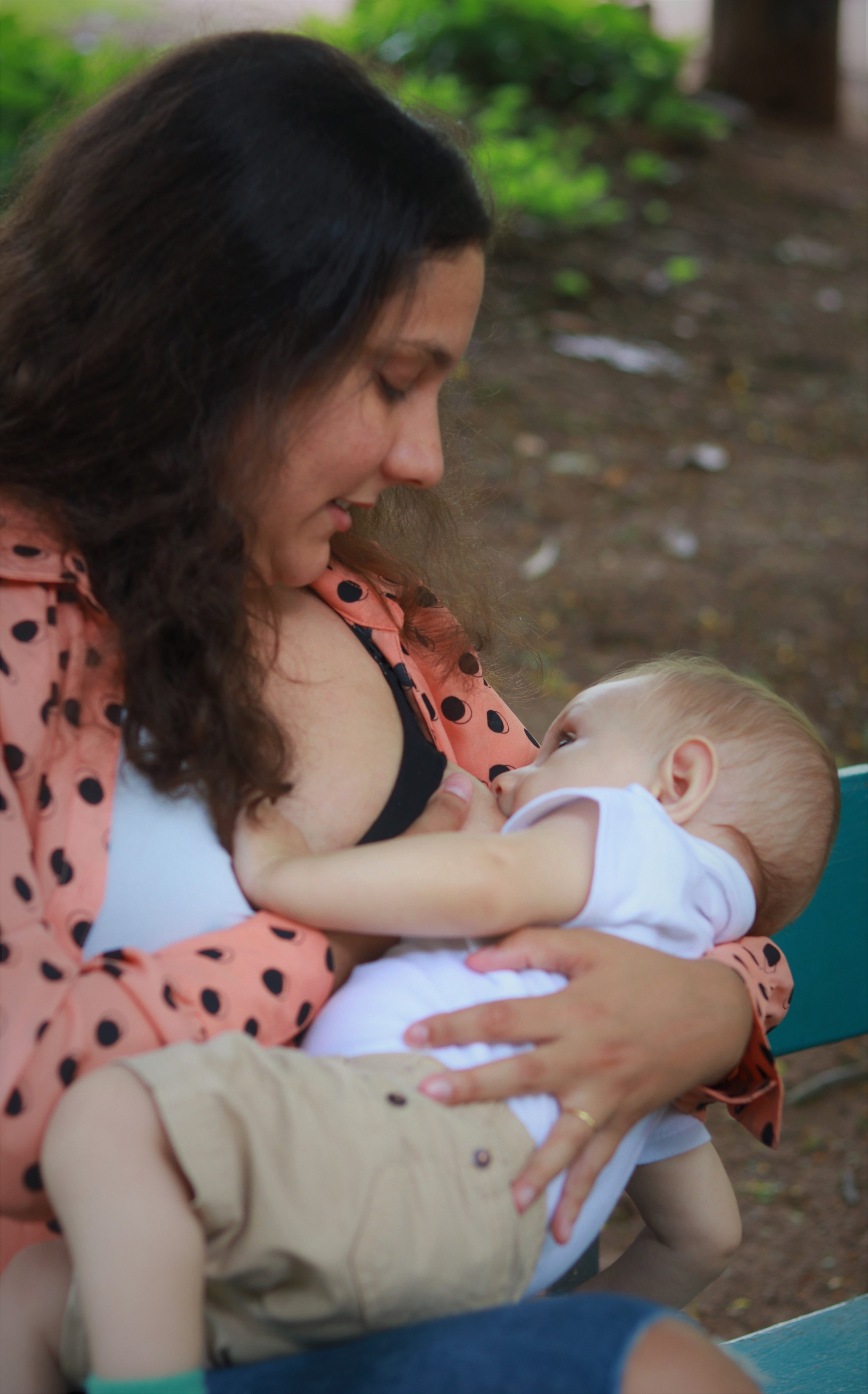Mastitis: symptoms, prevention and management
Breastfeeding a baby can be a satisfying experience, healthy for both baby and Mom. But the joy of this experience can be quickly thwarted by mastitis, a relatively common, painful and debilitating acute infection of the breast that affects between 10 and 30% of breastfeeding women. With the right care mastitis can often resolve on its own, but if neglected it can lead to a more serious infection, and can also cause women to prematurely stop breastfeeding because of the pain and discomfort.
Is it mastitis?
Breast infections can occur in women who are not breastfeeding, as well as in men. Very occasionally, women (whether breastfeeding or not) can develop a rare type of inflammatory breast cancer that has symptoms similar to mastitis. For any of these circumstances, it’s best to seek immediate medical attention in order to rule out other conditions. For breast pain specifically, you could also check out the article “Ouch my breasts hurt!”.
Mastitis is typically diagnosed through signs and symptoms, which include[i]:
Breast tenderness or warmth to the touch
Breast swelling
Thickening of breast tissue, or a breast lump
Pain or a burning sensation continuously or while breast-feeding
Skin redness, often in a wedge-shaped pattern
Generally feeling ill (body aches, headache, fatigue, nausea, vomiting)
Yellowy discharge from the nipple
Fever of 101 F (38.3 C) or greater
Mastitis often but not always involves a bacterial infection, usually Staphylococcus aureus. But it’s also possible to develop a fungal infection of the breast that can be passed back and forth between Mom and baby. One indication of a fungal infection is itchiness and flaky skin around the nipples and white spots on the inside of baby's cheeks, tongue, or gums[ii].
If not treated or resolved, mastitis can lead to a breast abscess, a serious condition difficult to treat that might require surgery.
Risk factors for mastitis
While most women do not experience mastitis while breastfeeding, there are certain factors that make it more likely:
Previous mastitis that developed while breastfeeding
Sore or cracked nipples — although mastitis can occur without broken skin
Wearing a tightfitting bra or putting pressure on your breast when using a seat belt or carrying a heavy bag, which may restrict milk flow
Improper nursing technique where the baby is not positioned correctly
Becoming overly tired or stressed
Poor nutrition
Smoking
Nipple damage (usually a cracked nipple) is the factor most strongly associated with mastitis, which usually occurs in the first weeks following delivery and is the reason why mastitis is more common close to the time of delivery.
Blogged milk ducts are connected with mastitis but it’s unclear if this is the result of a general inflammatory process, or whether it’s a cause of inflammation.
Increased stress levels are related to mastitis, but it’s possible that work or family responsibilities can cause missed feedings, which in turn increases the risk of blocked ducts.
Prevention
While it’s not always possible to prevent mastitis, the following are recommended for breastfeeding moms who wish to take steps to avoid it[iii]:
Allow the nipples to thoroughly air-dry after nursing (moist environments are favored by bacteria).
Avoid nursing pads or tight-fitting bras that keep nipples moist.
Nurse your baby on one side and allow the breast to fully empty before switching to the other breast.
Change breastfeeding positions in order to fully empty all areas of each breast (this can prevent a blocked milk duct).
Use your finger to break your baby’s suction on a nipple if you need to stop a feeding (some babies continue to latch on to the breast even after falling asleep).
Conventional medical treatment and self-care
If prevention measures are either not used or do not work, doctors will often advise good self-care for women with mastitis, such as[iv]:
Apply warm, moist compresses to the affected breast every few hours or take a warm shower.
While possibly counterintuitive and uncomfortable especially especially when there are sore nipples, it’s very important to continue breastfeeding every two hours or more often. This keeps milk flowing through the milk ducts. A breast infection does not make the baby sick. And sore nipples usually heal within a couple of days.
Drink plenty of fluids and rest when possible (resting is more likely when baby is sleeping).
Massage the area using a gentle circular motion starting at the outside of the affected area and working in toward the nipple.
Wear a supportive bra that doesn’t compress the breast.
Over-the-counter pain medications may be recommended. Antibiotics might also be prescribed to address a bacterial infection if present, usually for 10 to 14 days.
In the case of recurring mastitis, a lactation consultation may be recommended to help Mom with the positioning of baby or latching on.
An integrative approach to mastitis
Good self-care is extremely important in helping to resolve mastitis and can help avoid the use of antibiotics. Homeopathic medicines, which are federally recognized in the US, can also be an effective intervention. However, it’s important to remain watchful for progression to a more serious condition, which would require conventional medical care.
When the correct homeopathic medicine is prescribed for an acute condition like mastitis, there should be marked improvement within 24 hours or less. Your homeopath will ask a lot of questions about the onset and the exact nature of your symptoms, as well as any other changes that may have accompanied the infection. The medicine is initially taken multiple times during the first hours or days, with less frequent dosing as the condition improves.
[i] Wilson, E, S Woodd, L Benova (2020) “Incidence of and risk factors for lactational mastitis: a systematic review” Journal of Human Lactation 36(4):673-686 https://www.ncbi.nlm.nih.gov/pmc/articles/PMC7672676/
[ii] USDA WIC Breastfeeding support “Plugged ducts, mastitis and thrush”, accessed 22-7-14: https://wicbreastfeeding.fns.usda.gov/plugged-ducts-mastitis-and-thrush
[iii] Pearson-Glaze, P (2022) “Mastitis symptoms and treatment” accessed 22-7-14: https://breastfeeding.support/mastitis-symptoms-and-treatment/
[iv] Pevzner, M, A Dahan (2020) “Mastitis While Breastfeeding: Prevention, the Importance of Proper Treatment, and Potential Complications” Journal of Clinical Medicine 9(8): 2328 https://www.ncbi.nlm.nih.gov/pmc/articles/PMC7465810/

